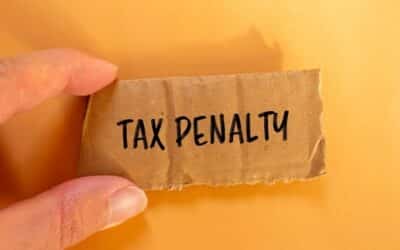Question: I am a 50-year-old sole owner of a corporation, receive $200,000 per year in salary and have one employee who earns approximately $50,000 per year. My employee has no interest in contributing to a 401(k) plan. Am I prohibited from participating in a 401(k) plan?
Answer: There is a multitude of retirement plan options available to small business owners. A 401(k) plan is but one of the available alternatives. While this response will address the 401(k) question you raise, you should be aware that other retirement plan options are available to you as well.
401(k) plans permit employees to contribute a portion of their salary to the plan on a pre-tax basis (“elective deferrals”). Non-discrimination requirements restrict the elective deferrals made to 401(k) plans by business owners and highly compensated employees based on the elective deferrals made by non-highly compensated employees. In your case, the general non-discrimination requirements will prevent you from making elective deferrals to a conventional 401(k) plan since your lone non-highly compensated employee is unwilling to contribute to the plan.
You should consider adopting a safe harbor plan which will allow you to make elective deferrals to a 401(k) plan. Although there are different safe harbor design options, the recommended 401(k) safe harbor for your situation involves your corporation making a plan contribution for your non-highly compensated employee equal to 3% of your employee’s compensation. Your employee must be fully vested in this safe harbor contribution meaning the employee will be entitled to the full value of this contribution and earnings thereon when the employee leaves the company. By making this 3% safe harbor contribution to the plan, you can make elective deferrals to the plan up to the statutory maximum of $17,500. Since you have attained age 50, you can make an additional $5,500 catch-up contribution to the plan for total elective deferrals of $23,000 for yourself. Most importantly, by satisfying this 401(k) safe harbor, the plan is not subject to 401(k) nondiscrimination testing.
While you may not be anxious to contribute $1,500 ($50,000 X 3%) to the 401(k) plan for your employee, consider the benefit. If you do not make any contribution to the plan and you are in the combined Federal and State income tax bracket of 40%, the $24,500 you are not contributing to the plan (e.g. $23,000 for yourself and $1,500 for your employee) will presumably be paid to you as compensation which will be subject to income taxes of 40% or $9,800 leaving you with $14,700 after taxes. Of the $24,500 you would instead contribute to the 401(k) plan, $23,000 will be allocated to your account meaning almost 94% of the total contribution is allocated to you. You have to ask yourself whether you would rather pay $9,800 in taxes or $1,500 to the plan for your employee.
Retirement plans are subject to top-heavy requirements which mandate that employers contribute certain amounts to retirement plans for rank and file employees where a specified threshold of plan assets are allocable to owners and other key employees. By contributing the 3% safe harbor contribution, your plan will not be subject to these top-heavy rules.
If you are willing to contribute more money to the plan than simply non-elective contributions for yourself and your employee, the safe harbor option can provide even more beneficial results. The plan can provide for a safe harbor contribution not only for your non-highly compensated employee but also for you which would entitle you to a contribution equal to 3% of your compensation. In addition to your $23,000 of elective deferrals, you would receive a contribution of 3% of your salary or $6,000. Furthermore, depending on your and your employee’s ages and other statutory requirements, you could contribute a total of 9% of your salary to the plan (the additional contribution of 6% of your compensation being contributed as a profit sharing contribution) inclusive of the 3% safe harbor contribution, without any additional contribution for your employee. In total, your $200,000 annual compensation will entitle you to $23,000 of elective deferrals, $6,000 of a safe harbor contribution and $12,000 of profit sharing contributions. You will have received $41,000 out of the total company contribution of $42,500 ($41,000 for yourself and $1,500 for your employee).
Again, you need to ask yourself whether you would rather receive an additional $42,500 in compensation and keep $25,500 after income taxes or contribute $42,500 to the plan and have $41,000 allocated to your account with $1,500 allocated to your employee. Other plan designs can be utilized to enable you to receive an even larger contribution.
Outside of the 401(k) arena, you can adopt other types of plans, either in addition to a 401(k) plan or in lieu of a 401(k) plan. Creative plan designs will permit you to maximize the contribution for your own benefit and minimize the contribution for your employee. A good rule of thumb is that if the contribution for your employees is less than the tax you would pay had there been no contribution, adopting the plan makes economic sense.
The Tax Corner addresses various tax, estate, asset protection and other business matters. Should you have any questions regarding the subject matter, you may contact Bruce at (312) 648-2300 or send an e-mail to [email protected].
CIRCULAR 230 Notice: In order to comply with requirements imposed by the Internal Revenue Service, we wish to advise you that (a) any U.S. federal tax advice contained in this communication is not intended and cannot be used for the purpose of avoiding tax-related penalties, and (b) no one, without prior written consent, may use any advice contained in this transmission in promoting, marketing, or recommending any entity, investment plan, or arrangement to another taxpayer.


